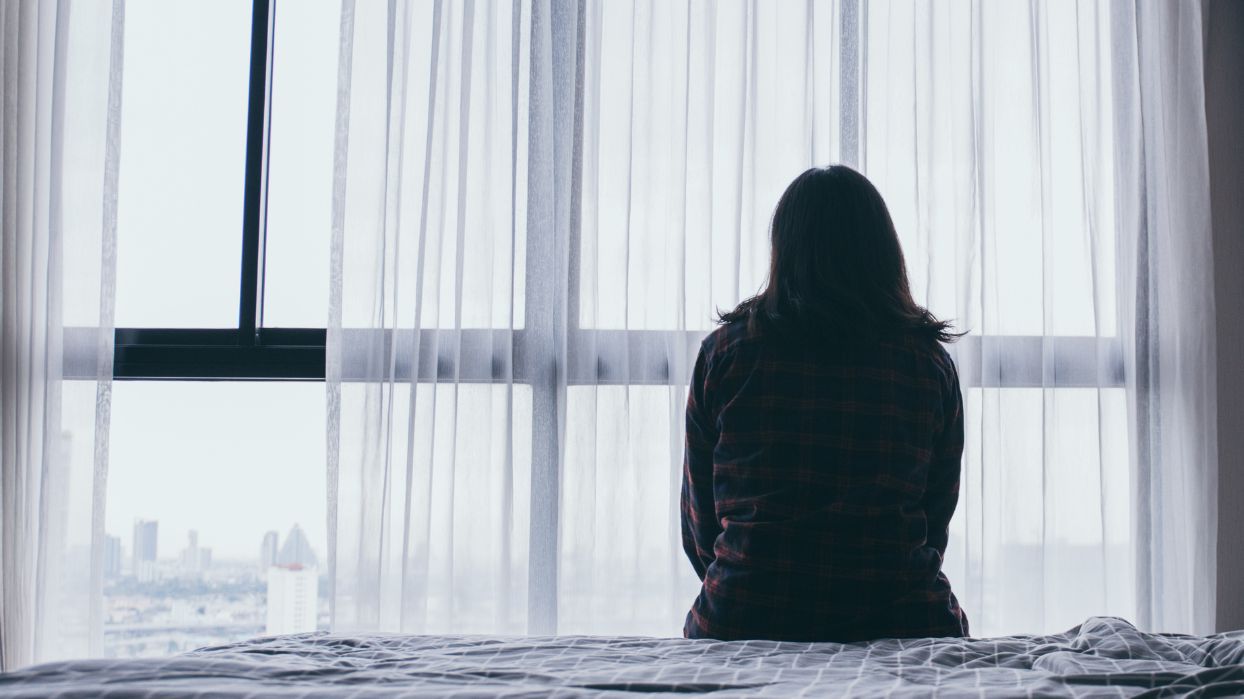This article explains parental responsibility with a focus on the legal routes to terminating parental responsibility.
Legal guardianship and parental rights
Section 3(1) of the Children Act 1989 defines parental responsibility as “all the rights, duties, powers, responsibilities and authority which by law a parent of a child has in relation to the child and his property”.
Some of the key decisions which can be made by those with parental responsibility include:
- disciplining the child;
- choosing or changing the child’s name;
- consenting to medical treatment;
- choosing where the child goes to school and providing for their education
- looking after the child’s property; and
- consenting to take the child abroad for holidays.
Automatic assignment of parental responsibility
Legal Guardianship and Parental Responsibility
Under the Children Act 1989, parental responsibility is clearly defined as all the rights, duties, powers, responsibilities, and authority that a parent of a child has in relation to the child and their property by law.
The same act also defines how legal guardianship may be granted. According to the Children Act 1989, any parent holding parental responsibility for a child has the authority to designate another individual as the child’s guardian in the event of their own death. This appointed guardian is referred to as a testamentary guardian. The appointment can be formalised in a will or in writing, provided it is dated and signed by the appointing person or by someone acting on their instructions.
Who Automatically Holds Parental Responsibility?
It is important to note that having parental responsibility is not the same as being a parent. At common law, the woman who carries and gives birth to the child is the legal mother of the child in all circumstances, irrespective of whether she has any genetic connection to that child. This principle gained statutory footing pursuant to section 33 of the Human Fertilisation and Embryology Act 2008.
When a mother and father are married at the time of the child’s birth, they will both automatically get parental responsibility for the child. Second female parents will also automatically have parental responsibility, if they were married to or in a civil partnership with the mother at the time of birth.
It is important to consider parental responsibility as a legal concept to a degree. Indeed, the birth parent of an adopted child remains the child’s biological, or natural, parent as a matter of fact. However, such a parent is no longer the child’s legal parent, and does not possess parental responsibility, by virtue of the Adoption and Children Act 2002. Similarly, having (or not having) parental responsibility is not determinative of whether an individual is a parent of the child as a matter of fact or in law. It is possible for a legal parent not to have parental responsibility (for example where it has been terminated by the court). It is also possible for a person who is not a legal parent to have PR.
Following this, there are certain family members who do not have automatic parental responsibility including fathers who are not married to or in a civil partnership with the mother, step-fathers, step-mothers and grandparents.
Securing parental responsibility: a guide
Legal processes for obtaining parental responsibility
An unmarried father or second female parent can acquire parental responsibility in three ways:
- by registration on the child’s birth certificate;
- by entering into a “parental responsibility agreement” with the mother;
- by order of the court;
- by becoming the child’s guardian; or
- by adopting the child.
Consent and court orders: ensuring your rights
Many parental responsibility arrangements begin with voluntary agreements between parents. While these agreements may not be legally binding, they set the foundation for cooperative co-parenting. Parents need to be clear and transparent in their discussions, outlining roles, responsibilities, and expectations. To give legal weight to agreements, parents can opt for a Parental Responsibility Agreement, a formal documentation of a consensual arrangement that requires the consent of both parents. It grants parental responsibility to a non-biological parent or recognises joint responsibilities.
In cases where agreements cannot be reached or need legal enforcement, the Family Court can issue various orders to regulate parental responsibilities. Child Arrangements Orders, Specific Issue Orders, and Prohibited Steps Orders are common legal tools used to address disputes and provide clarity on parental roles.
- Child Arrangements Orders: These orders determine where a child will live, with whom they will spend time, and what other types of contact they will have with parents or other significant individuals.
- If the court are minded to make a child arrangements order for a child to live with the father, it must also make a parental responsibility order; however
- If the father is named within the child arrangement order as a person with whom the child is to spend time or otherwise have contact with, the court must concur whether it would be appropriate to make a parental responsibility order in his favour.
- Specific Issue Orders: If a specific matter requires resolution, such as a change in the child’s school or medical treatment, a Specific Issue Order can be sought to address that particular issue.
- Prohibited Steps Orders: This order prevents a parent from taking certain actions without the court’s permission, such as relocating with the child without consent.
To obtain a court order, a parent must submit an application to the Family Court. The court will consider the best interests of the child as the paramount concern when making decisions.
Termination of parental responsibility: key considerations
Parental responsibility can end automatically (once the child reaches the age of 18), or by court order. In Gillick v West Norfolk and Wisbech Area Health Authority, it was noted that parental responsibility diminishes as a child grows older, due to their ability to make up their own mind on certain matters requiring decisions. Indeed, once a child has attained the age of 16, a local authority/medical facility is under no legal obligation to send to the parents any information about their day-to-day life or medical assessments and treatment.
Circumstances leading to termination
On 3 October 2023, the Ministry of Justice announced an amendment to the Victims and Prisoners Bill to automatically suspend parental responsibility for parent convicted of killing the other parent with whom they have a child. This law, known more commonly as ‘Jade’s Law’ arose from a campaign lead by the family of Jade Ward, who was killed by her former partner in 2021, to ensure that he was unable to take part in decisions relating to their four children.
Other than the aforementioned automatic suspension provided by Jades Law, there is no provision for discharging the parental responsibility of a mother, a married father or a married second female partner (the same applies to those in civil partnerships).
Section 4(2A) of the Children Act provides that a person who has acquired parental responsibility shall cease to have that responsibility only if the court so orders.
Legal grounds and implications
The only mechanisms for terminating the PR of a mother is by way of a parental order (Human Fertilisation and Embryology Act 2008, section 54) or by way of an adoption order (Adoption and Children Act 2002, section 46(2)). The same mechanisms apply for the termination of a father’s PR or that of a second legal parent when married to/in a civil partnership with the mother of a child.
Where the PR in question pertains to an unmarried father, second female parent or a stepparent, an application can be made to the court by the other PR holder (or by the child) to terminate their PR pursuant to the Children Act 1989, section 4(2A) or section 4ZA.
While it is rare for parents to lose their parental responsibility, as the courts typically view the parent-child relationship as being beneficial to the child, there are some situations where the courts feel it is in the child’s best interest for a parent to lose their rights.
For example, the court may decide a parent should lose their parental responsibilities in cases of proven long-term neglect or abuse. We look at specific cases where courts have ruled as such in the next section.
Case studies: successful termination of parental responsibility
Legal precedents and noteworthy cases
The first reported judgment in which a mother made a successful application to terminate the father’s parental responsibility was Re P (Terminating Parental Responsibility) [1994]. As with all applications made pursuant to the Children Act 1989, the court emphasised that the welfare of the child is the court’s paramount consideration. The court felt that the desire for parental responsibility is laudable and should be encouraged, and on that basis, the presumption should be for continuance rather than termination with a rescission as the very last resort. The key test laid down by the court, and applied in later cases, is whether the court would grant parental responsibility based on the facts now if such responsibility did not already exist.
The removal of parental responsibility is a draconian measure, and not one the court will grant lightly. The following cases demonstrate that parental responsibility will only be removed in extreme circumstances.
CW v SG [2013]
The child (D) was the only biological son of both the mother and the father. The mother had two daughters from a previous relationship. D’s father pleaded guilty to sexually abusing D’s step-sisters (although he later claimed this was a false confession). During his time in prison, the father wrote to say he wanted contact with D. Upon his release from prison, the mother made an application to terminate his parental responsibility.
The court held it was inconceivable that if the father made an application for parental responsibility at that time, it would be granted. Owing to the impact of D’s abuse of the step-sisters on the family, the father could not foreseeably exercise parental responsibility in a way which was beneficial for D. The court therefore terminated parental responsibility.
M v F (change of surname: terminating Parental Responsibility) [2016]
The father was accused and convicted of seriously sexually abusing his child (A) and was sentenced to 14 years in prison. The mother made an application seeking termination of the father’s parental responsibility for both of their children. The mother also applied for an order seeking a change of the children’s surnames.
The court found that the application was entirely appropriate and child-focused. The magnetic factors were the significant harm A had suffered at the hands of her father, the children’s emotional needs and the risk of future harm to both children if the father exercised parental responsibility to be involved in their lives.
D v E [2021]
The mother applied for a child arrangements order for no contact between the child and father, a specific issue order to change the child’s surname, and an order terminating the father’s parental responsibility.
The father had engaged in a course of harassment against the mother after their separation. The mother also alleged domestic violence and coercive and controlling behaviour during their relationship. Separately, the father was accused and convicted of grooming and threatening a 14-year-old girl amongst other offences.
The court found that the father posed a significant risk to adolescent children and that if he continued to have parental responsibility, the father would likely use it to control and harass the mother. The court was satisfied that terminating the father’s parental responsibility was manifestly in the child’s best interests.
X v Y [2023] EWCH 3170 (Fam)
The application for termination of Father’s PR was predominantly made on the basis of domestic abuse and sexual abuse experienced by the mother, and concerns from Cafcass that the children would suffer emotional harm if they had even indirect contact with Father. The father had been convicted of coercive and controlling behaviour towards the mother and sentenced to 30 months imprisonment.
Given the severity of the Fathers’ conduct, the professional reports, and his very limited involvement in the children’s lives, the judge held that it was effectively “inconceivable” that parental responsibility would be granted if the father were to apply for it now. Further, the children’s Article 8 right to a private life and a secure home conflicted with any Article 8 rights of the father, and therefore should take precedence. Lieven J considered it proportionate to remove the father’s parental responsibility, as the children had no real or substantive attachment to the father, having no contact with him for almost five years due to his criminal conduct and conviction. The court accordingly held that the twins should live with mother, the father should have no contact (whether direct or indirect) with them and made an order to remove the father’s parental responsibility for the children.
Re EMP (A Child) (Re Section 8 of the Children Act 1989) [2024] EWFC 12
In this case, the mother had applied for:
- an order terminating (and in the alternative, restricting) the parental responsibility of a father,
- a s 91(14) order preventing the father from making further applications in respect of the child, and
- a specific issue order to allow the child’s surname to be changed to the mother’s rather than the father’s.
The mother had alleged rape and domestic abuse perpetrated by the father. In this case, His Honour Judge Baker opined that the ‘no order’ consideration is best discussed in the context of proportionality. Indeed, if a judge feels that court interference is necessary and proportionate to safeguard the welfare interests of a child, it must consider the extent to which the interference is necessary (e.g. terminating parental responsibility in its entirety, or merely restricting its use by way of prohibitive steps orders). The following scenarios were included to demonstrated that it is proportionate to remove a father’s parental responsibility if he:
- Has no contact with the subject child,
- Has caused significant harm to the subject child’s mother,
- Makes no substantive acknowledgement of any of the findings,
- Where the practical exercise of PR relates solely to ‘rights’ flowing to the father,
- Where the father’s continued involvement in the child’s life, even at the periphery, adversely affects the mother, therefore indirectly affecting the child, and
- Where there is a positive welfare benefit to the child in revoking parental responsibility.
Importantly, Judge Baker also considered the representative value of parental responsibility, and its significance when deciding between restricting and terminating it. Allowing an individual to retain the legal status, beyond the practical rights and responsibilities, can be detrimental to both the co-parent and child if they have acted in an illegal or improper manner towards that co-parent or child.
Exploring alternatives to termination
Mediation and dispute resolution
Mediation stands as a viable alternative to conflict resolution in families and should be undertaken long before considering the termination of parental rights. Mediation is encouraged by the Family Court as a means to foster communication, resolve conflicts and reach agreements between disputing parties.
The Family Mediation Council regulates family mediation in the UK. As stated in section 10 of the Children and Families Act 2014, parties involved in a dispute related to children are required to attend a Mediation Information and Assessment Meeting (MIAM) before applying to the court.
During mediation, a qualified mediator facilitates the process, assisting parents in reaching a mutually agreeable resolution. Through open communication and guided negotiation, parents can address issues such as custody, visitation and financial responsibilities. Mediation not only provides an avenue for constructive dialogue but also helps in preserving the parental relationship, fostering a more stable and supportive environment for the child. It can be a cost-effective and less adversarial approach compared to court proceedings.
However, as with many cases where an order terminating parental responsibility is sought, a parent who has experienced domestic abuse from the co-parent is exempted from mediation, and should not feel pressured into entering into this form of dispute resolution, which would not be appropriate.
Modifying parental responsibility arrangements
In some cases, the existing parental responsibility arrangements may need modification to better suit the evolving needs of the child and the circumstances of the parents. Instead of terminating parental rights, the UK legal system allows for adjustments to be made to the existing agreements.
Section 8 of the Children Act 1989 empowers the court to make Child Arrangements Orders, which regulate with whom a child is to live, spend time, or otherwise have contact. Changes in employment, residence, or the child’s needs can necessitate modifications, and either parent can apply to the court for any necessary modifications. The court will assess whether the proposed changes are in the best interests of the child, ensuring their welfare remains the paramount consideration.
A parent seeking modification must submit a formal application to the court, detailing the proposed changes and the reasons behind them. The court will then consider the application, taking into account the views and welfare of the child. Modifying parental responsibility arrangements allows for flexibility in adapting to the dynamic nature of family life. It acknowledges that circumstances may evolve, and adjustments can be made to ensure the continued well-being and stability of the child.
You can find further information regarding our expertise, experience and team on our Children Law pages.
If you require assistance from our team, please contact us or alternatively request a call back from one of our lawyers by submitting this form.
Subscribe – In order to receive our news straight to your inbox, subscribe here. Our newsletters are sent no more than once a month.






